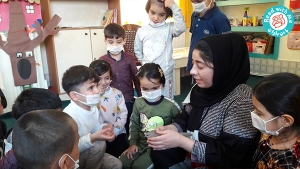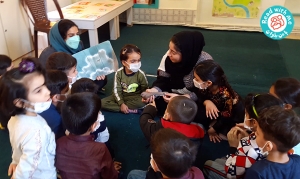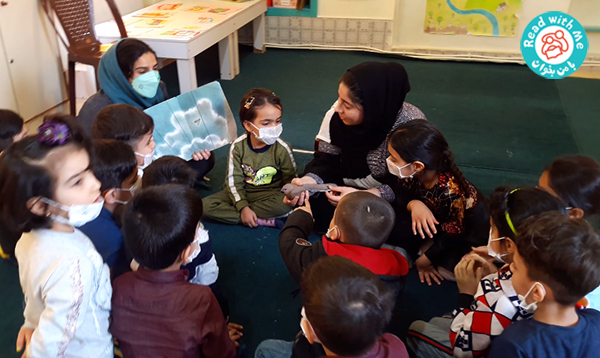The Little Bird in the Class
Children and The Experience of Reading Aloud How to Heal a Broken Wing?
Education, reading fiction and every-day life are not separate from each other. By choosing quality books and reading them aloud in an effective way, teachers, librarians and reading promoters can help children gain a deeper understanding of fictional narratives and encourage them in a happy and pleasant atmosphere to think about the relationship between every-day and fictional events and then use whatever they have learned from stories in their lives.
This is an experience related to reading aloud Bob Graham’s book How to Heal a Broken Wing? in Neda-ye Mandegar Institute, told by one of the pre-school trainers. The event shows how stories are inscribed on children’s minds and shape their behavior and their relationship with animals.
The Preschool of Neda-ye Mandegar Empowerment Institute,
Darvazeh Ghar neighborhood in Tehran, Tehran Province.
March 2022
“Today, out of the blue sky, an uninvited guest entered our class. It was a small collard dove which was learning to fly but had suddenly flown in the class through the window. When it wanted to go out, it hit the window glass. It tried several times but was not able to find its way out. My colleague, Ms. Nasiri, held the collared dove in her hands to take it outside. When children saw this, they gathered around her. They gazed at the little bird lying calmly in her hands, each saying something.
Afshin was very excited. Seeing the bird hit the window glass, he was reminded of the book How to Heal a Broken Wing? He hurried to the library and found the book among other books, brought it to us and said: “This is the same bird as the one in this book. The bird that hit the window and fell down.”
We had read this book for children in the class before. Therefore, my other colleague, Ms. Azadbakht, opened the book and flipped through the pages in front of the children and retold the story so that they all remember it. Afshin remembered the story very well and was telling it with a lot of excitement. It was very interesting and amazing for us to see how children themselves went to the library and brought the book related to today’s incident.
Then, the children caressed the bird one by one. “What is a bird’s body covered with, children?” My colleague asked them. “Hair,” the children answered first. By my colleague’s hints, they realized its body is covered with feathers. Then they touched its feathers. Afterwards, they talked about birds’ food and whether they lay eggs or are childbearing. The children liked to choose a name for the bird. “I call it The Beautiful Bird,” one of the boys said.
There was only one child who was a little afraid and was pulling herself back, not getting too close to the bird. We tried to show her by caressing the bird’s feathers that it would not hurt her at all. She came closer and caressed the bird, at last.
In the end, my colleague led the little bird out of the class to go to its parents. The children were still watching the bird when it flew up to its parents who were waiting for it on the roof of the opposite building and started to learn how to fly again. After the bird left, children gathered the feathers which were scattered on the class floor. Afshin kept the feathers as keepsake.






دیدگاه خود را ثبت کنید
تمایل دارید در گفتگوها شرکت کنید؟در گفتگو ها شرکت کنید.